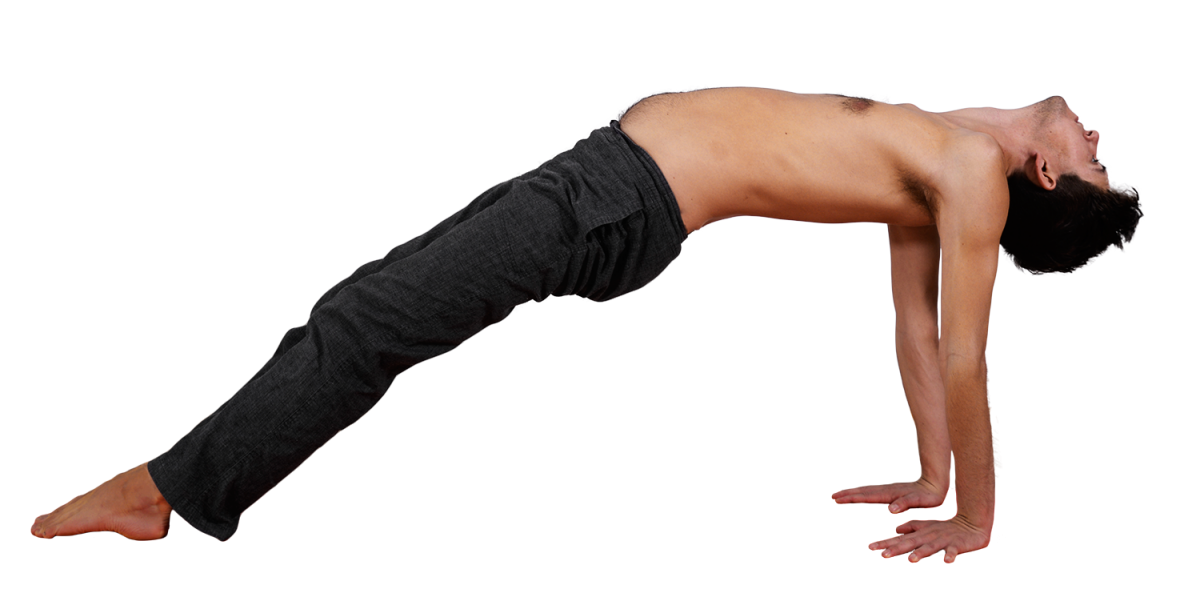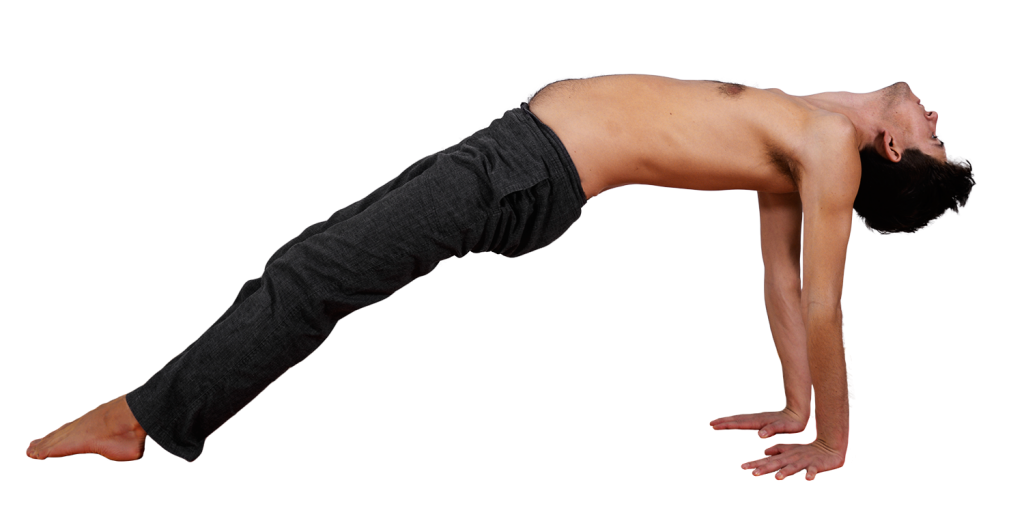Purvottanasana
- Purva: East
- Uttana: Stretched
- Asana: Pose
Purvottanasana is the eighth pose of the primary series, and the third seated pose. It is one of the best postures in the seated primary series to develop hamstring and backbending strength.
FOCUS ON…
This posture is a backbend, albeit a mild one. The focal point of Purvottanasana is to lift the hips as high as possible. As a result, a gentle backbend forms, mostly in the lumbar spine.
The hands are placed beneath the shoulders, with the fingers pointed forward. The palms of the hands and the soles of the feet are to be fully in contact with the mat.
Use the legs to full effect, especially recruiting the hamstrings and gluteal muscles to help lift.
The gaze is down the length of the nose, which is in the direction of the ceiling with the head back. Be sure to actively extend the neck—simply surrendering the weight of the head to gravity can create a feeling of pinching or discomfort in the neck.
Vinyasa of the Pose
From Sat, jump through and land in Dandasana.
Still exhaling, place your hands roughly 8 inches behind your hips, shoulder width apart.
Inhale, lift the hips high and arch the back. Five breaths; this is the state of the pose.
Exhale, set down. Take Vinyasa.
ALTERNATIVES & SOLUTIONS
If you’re unable to lift enough that the soles of the feet touch the ground, bend one knee slightly. The extra power from that leg will help you lift much higher. Without the feet on the ground, you’ll be working much harder without seeing significant benefit. Switch which leg you bend, either five breaths on each side, or right leg one day and left the next day. After some practice, you’ll be able to have the feet on the ground with the legs straight.
If you have shoulder injury, for example a torn bicep tendon, lift only as much as you can without pain. Keep one or both knees bent. Experiment with turning the hands so the fingers point backwards, or placing the hands on blocks. Don’t push too hard or too quickly—Purvottanasana is not especially forgiving to injured shoulders.
If there is neck pain with the head back, take the chin to the chest and gaze towards the navel.
COMMON MISTAKES
There is relatively little technique, here. The most common errors are errors of omission: hyperextension of the elbows, letting the hips sag, or not fully activating the legs and feet.
If you are having trouble finding height in this posture, place your feet against a wall so that your toes are up the wall but the ball of the foot is on the floor. This will allow you to push and get the feeling of lift and activation of the legs.



